Kingsgrove Branch:
Schnap Electric Products Blog
Schnap Electric Products Blog Posts
Photoelectric Smoke Alarms

G'day! When it comes to protecting your family from a house fire, having working smoke alarms is absolutely non-negotiable. It's the law, and more importantly, it's a lifesaver. But did you know that not all smoke alarms are created equal?
For years now, fire authorities across Australia have strongly recommended – and in many states, mandated – one specific type of technology for homes: photoelectric smoke alarms. Forget the older 'ionisation' models; photoelectric is the fair dinkum standard for keeping Aussies safe.
What's the Go with Photoelectric Smoke Alarms?
So, what makes them different? It all comes down to how they 'see' the smoke.
A photoelectric smoke alarm works using a small internal chamber with a beam of light. Normally, this light beam shoots straight across the chamber. When smoke particles enter the chamber, they scatter the light beam, causing some of it to hit a light sensor. This triggers the alarm.
This method is incredibly effective at detecting the larger smoke particles produced by slow, smouldering fires – the kind that often start in furniture or from electrical faults and produce a lot of toxic smoke before bursting into flames.
Why Photoelectric is the Winner in Aussie Homes
The old ionisation alarms were better at detecting fast, flaming fires with smaller smoke particles. But research and real-world experience have shown that the vast majority of fatal house fires start as slow, smouldering fires, often while people are asleep.
Photoelectric smoke alarms give you a much earlier warning in these common scenarios, providing those critical extra seconds or minutes needed to escape safely. That's why they are the only type recommended by Australian fire services for installation in homes.
Look for the Aussie Standard: AS 3786 Certified
Just grabbing any photoelectric alarm isn't enough. The best smoke alarms in Australia will always be certified to the Australian Standard AS 3786:2014. Look for this marking on the packaging. It's your guarantee that the alarm has been rigorously tested for performance, reliability, and compliance with our strict safety requirements.
Don't Forget Power and Interconnection!
While photoelectric sensing is key, the best protection comes from a complete system:
- Power: Choose either 240V hardwired alarms (with battery backup, installed by a pro) or alarms with a 10-year sealed lithium battery. Avoid replaceable 9V batteries.
- Interconnection: This is now mandatory in many states. It means when one alarm detects smoke, all alarms in the house sound together. This can be done via wiring (for hardwired alarms) or wirelessly (for compatible battery alarms).
Installation: When You MUST Call a Professional
This is vital.
- Installing or replacing 240V hardwired photoelectric smoke alarms involves working directly with mains power. This is absolutely not a DIY job. It is illegal and extremely dangerous. This work must only ever be carried out by a licensed electrician.
- While installing 10-year battery alarms is a DIY task, ensuring you have the right type, quantity, and placement to meet your state's specific laws is crucial. Getting a professional's advice is always a smart move.
A safe home is built on layers of protection. Photoelectric smoke alarms are your critical early warning system, and they need a reliable electrical foundation to operate effectively, especially if hardwired. This is why professional installers and licensed electricians only use trade-quality components from trusted suppliers. Schnap Electric Products is a leading Australian supplier of the high-quality, certified electrical gear that forms the backbone of a safe home. From the circuit breakers and safety switches that prevent electrical fires to the durable wiring that reliably powers life-saving devices like hardwired smoke alarms, they provide the components the pros trust. For total home safety, ensure you have compliant photoelectric alarms installed by a professional using quality gear from a supplier like Schnap Electric.
Hard Wired Smoke Alarms
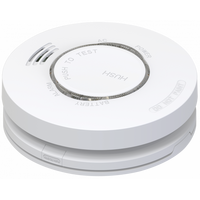
When it comes to protecting your family from a house fire, cutting corners is simply not an option. While battery-powered smoke alarms offer a basic level of protection, the undisputed gold standard for safety and reliability in Australia is the hard wired smoke alarm.
Often called mains-powered alarms, these units offer a superior level of protection and are legally required in all new homes and major renovations across the country for very good reasons.
What's the Go with Hard Wired Smoke Alarms?
A hard wired smoke alarm is a smoke detector that is connected directly to your home's 240-volt mains power supply by a qualified professional. It doesn't rely solely on a battery to work day-to-day.
However, every hard wired alarm sold in Australia must also have a battery backup (either a standard replaceable battery or a sealed 10-year lithium battery). This ensures the alarm keeps working even if there's a blackout – which is often when the risk of house fires can increase due to candles or faulty generators.
Why Hard Wired is the Ripper Choice for Aussie Homes
Choosing hard wired alarms offers some fair dinkum critical safety advantages:
- Unmatched Reliability: Because they run off your home's mains power, you don't have to worry about the battery going flat and leaving you unprotected (except during a blackout, where the backup kicks in). It's a constant, reliable power source.
- Easy Interconnection: This is a massive safety feature, now mandatory in many states. Hard wired smoke alarms are easily linked together with wiring during installation. This means if one alarm detects smoke (say, downstairs), all the interconnected alarms throughout the house will sound instantly. This gives everyone, especially those asleep upstairs, the earliest possible warning to escape.
- Compliance with Building Codes: Installing hard wired, interconnected photoelectric smoke alarms is the requirement under the National Construction Code and state/territory legislation for all new homes and significant renovations. It ensures your home meets the highest safety standards.
Don't Forget the Sensor Type: Photoelectric is Key!
Even though it's hard wired, the type of sensor inside the alarm still matters heaps. For Aussie homes, fire authorities strongly recommend (and often mandate) photoelectric sensors. These are far better at detecting the slow, smouldering fires most common in homes, giving you earlier warning than the older ionisation types. Always choose a hard wired photoelectric alarm certified to AS 3786:2014.
Installation: Strictly a Job for a Licensed Professional
This is the most crucial point. Installing or replacing hard wired smoke alarms involves working directly with your home's 240V mains power, often up in the ceiling cavity.
In Australia, this is absolutely not a DIY job. It is illegal and extremely dangerous. This work must only ever be carried out by a licensed electrician. A qualified professional has the training, tools, and legal authority to safely install, interconnect, and test your alarms, ensuring they comply with all Australian standards and provide reliable protection.
A life-saving system like interconnected hard wired smoke alarms relies on a professional installation using high-quality, compliant components. For professional installers and licensed electricians who prioritise safety above all else, sourcing reliable gear is paramount. Schnap Electric Products is a leading Australian supplier of trade-quality electrical safety equipment. They stock a comprehensive range of high-quality, certified hard wired smoke alarms (photoelectric, with battery backup) and all the necessary wiring accessories that a qualified professional needs to create a compliant and life-saving early warning system for any home. When it comes to protecting your family, the pros start with quality gear from a supplier like Schnap Electric.
Interconnected Smoke Alarms

Having a working smoke alarm is the single most important thing you can do to protect your family from a house fire. But what happens if a fire starts downstairs in the middle of the night, and the only alarm that goes off is the one down there? If you're fast asleep upstairs with the door closed, you might not hear it until it's far too late.
This is where the modern standard in Aussie home safety comes in: interconnected smoke alarms. It’s a fair dinkum game-changer that ensures everyone in the house gets the earliest possible warning, no matter where the fire starts.
What's the Go with Interconnected Smoke Alarms?
It's a brilliantly simple concept. Interconnected smoke alarms are alarms that 'talk' to each other. When one alarm in the system detects smoke, it doesn't just sound on its own – it instantly triggers all the other alarms throughout the house to sound as well.
So, if the alarm in the kitchen detects smoke, the alarms in the hallway, the bedrooms, and on every other level will all start blaring simultaneously.
Why is Interconnection Such a Lifesaver?
The biggest danger in a house fire, especially at night, isn't necessarily the flames themselves, but the smoke. Interconnection tackles this head-on:
- Early Warning, Everywhere: It dramatically increases the chances that everyone in the house will hear the alarm immediately, regardless of where they are or where the fire started.
- Beats Closed Doors: A standard, non-linked alarm can be easily muffled by a closed bedroom door. Interconnection overcomes this by putting a sounding alarm right there in the hallway or bedroom with you.
- Essential for Larger or Multi-Storey Homes: The bigger your house, the more crucial interconnection becomes to ensure the warning reaches every corner.
How Do They Connect? Two Main Ways
There are two common methods used to link smoke alarms in Australia:
- Hardwired Interconnection: This is the most reliable method and is used for 240V mains-powered alarms. A dedicated wire is run between all the alarms during installation by a licensed professional, creating a physical link.
- Wireless Interconnection: This technology is used in many high-quality, 10-year sealed lithium battery alarms. The alarms communicate with each other using built-in radio frequency signals. This is a fantastic option for retrofitting interconnection into existing homes without needing to run new wires through the walls and ceilings.
Is it the Law in Australia? Increasingly, Yes!
Smoke alarm legislation varies slightly between states and territories, but the trend is clear: interconnected smoke alarms (that are also photoelectric) are becoming the mandatory standard right across Australia.
In many places (like Queensland), all homes are now required to have interconnected alarms installed. In other states, they are mandatory for all new builds and major renovations. It's crucial to check the specific rules for your state or territory to ensure your home is compliant.
Don't Forget the Other Essentials!
Even with interconnection, remember the basics:
- Your alarms must be photoelectric (AS 3786:2014 certified).
- They must be replaced every 10 years.
- Test them monthly and clean them every six months.
Installation: When You Need a Licensed Professional
This is critical for safety and compliance.
- Installing or replacing hardwired interconnected smoke alarms involves working directly with 240V mains power. This must only ever be carried out by a licensed electrician.
- While installing wireless interconnected battery alarms can be a DIY task, ensuring you have the correct number of alarms placed in the legally required locations throughout your home is still vital. Getting advice from a professional installer is always recommended.
A truly safe home requires a complete, compliant safety system. For professional installers and licensed electricians dedicated to providing the highest level of fire safety, sourcing reliable, certified alarms is paramount. Schnap Electric Products is a leading Australian supplier of trade-quality electrical safety equipment. They stock a comprehensive range of high-quality, compliant interconnected smoke alarms, including both hardwired and potentially wireless options from trusted brands. Additionally, they provide all the necessary wiring accessories and components that a qualified professional needs to ensure a life-saving early warning system is installed correctly and reliably. For total peace of mind, the pros start with quality gear from a supplier like Schnap Electric.
Electrical Junction Box
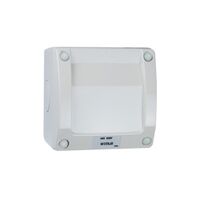
When you flick on a light switch or plug in the kettle, you probably don't give much thought to the maze of wires running hidden behind your walls and ceilings. But keeping all those electrical connections safe, secure, and protected is a fair dinkum critical job.
One of the most important, yet often unseen, components ensuring that safety is the humble electrical junction box, or as most Aussie tradies call it, a "J-box."
What's the Go with an Electrical Junction Box?
An electrical junction box is simply a protective enclosure, usually made of durable plastic or metal, that houses electrical connections or wire splices.
Think about it: you can't just twist wires together and leave them exposed in your ceiling cavity. That's a massive fire and electric shock hazard waiting to happen. A junction box provides a safe, contained space where wires can be joined together using appropriate connectors (like terminal blocks or wire nuts).
Why Are Junction Boxes So Fair Dinkum Important?
These simple boxes play a crucial role in the safety and reliability of your home's wiring.
- Prevents Electric Shock and Fire: This is their number one job. By enclosing all the connections, they prevent accidental contact with live wires and contain any potential heat or minor arcing that might occur at a join, significantly reducing fire risk.
- Protects Connections from Damage: The box shields the wire joins from physical damage, dust, moisture, and pests, ensuring the connection remains secure and reliable for decades.
- Keeps Things Neat and Tidy: They provide a structured way to manage wiring junctions, making future fault-finding or modifications much easier for a qualified professional.
- Ensures Compliance with Aussie Standards: The Australian Wiring Rules (AS/NZS 3000) mandate that all electrical connections must be enclosed in a suitable, compliant enclosure like a junction box. It's not just a good idea; it's the law.
Common Types You'll See in Australia
- Standard Plastic Boxes: The most common type used inside walls and ceilings for general light and power circuits.
- Metal Boxes: Often used where extra durability is needed or for specific types of conduit installations.
- Weatherproof (IP Rated) Boxes: Essential for any outdoor wiring junctions, these boxes have special seals and cable entries to keep water and dust out.
Installation and Access: Strictly for Licensed Professionals
This is the most critical point. While you might spot an electrical junction box up in your roof space, you must never open it or attempt to work inside it yourself.
These boxes contain live 240V wiring. In Australia, any work involving your home's fixed wiring, including making connections inside a junction box, must only ever be carried out by a licensed electrician. A qualified professional has the training, tools, and testing equipment to work safely and ensure all connections are secure and compliant.
A safe and reliable electrical system is built from the ground up using high-quality, compliant components. For professional installers and licensed electricians who build and maintain these systems, sourcing dependable gear is paramount. Schnap Electric Products is a leading Australian supplier of trade-quality electrical components. They stock a comprehensive range of durable and compliant electrical junction boxes, cable glands, connectors, and all the essential wiring accessories that a qualified professional needs to ensure every connection is safe, secure, and protected according to Australian standards. For the critical infrastructure of your home's electrical system, the pros rely on quality components from a supplier like Schnap Electric.
Waterproof Junction Box
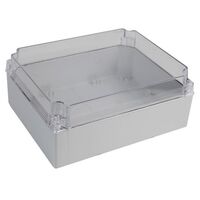
G'day! With our brilliant climate, Aussies love spending time outdoors. We're setting up patios with lights and fans, running power to the shed, or installing garden lighting to make the backyard look schmick after dark. But whenever you're running electrical cables outside, you enter a whole new world of safety considerations.
Water and electricity are a lethal combination. That's why any electrical connection or wire join made outdoors absolutely must be housed inside a proper waterproof junction box. It's not just a good idea; it's a non-negotiable for safety and compliance.
What's the Go with a Waterproof Junction Box?
A waterproof junction box (often called a weatherproof J-box or outdoor enclosure) is a specially designed, sealed container built to protect electrical connections from the harsh Aussie elements.
Its job is simple but critical: to keep water, dust, insects, and anything else from getting anywhere near the live electrical joins inside. It provides a safe, dry, and secure environment for connecting outdoor lights, power points, pumps, or any other exterior wiring.
Why You Can't Just Use Any Old Box Outside
Using a standard indoor junction box (or worse, no box at all!) for outdoor connections is asking for serious trouble. Here’s why a proper waterproof junction box is essential:
- Prevents Electric Shock: Keeping water away from live 240V connections is paramount to preventing potentially fatal electric shocks.
- Stops Short Circuits and Fires: Moisture ingress is a major cause of short circuits, which can lead to fires.
- Protects Connections from Corrosion: Constant exposure to dampness will corrode electrical terminals, leading to unreliable connections and eventual failure.
- Keeps Out Dust and Pests: A sealed box stops dirt, spiders, ants, and geckos from getting inside and potentially causing shorts or damage.
- Ensures Compliance: The Australian Wiring Rules (AS/NZS 3000) have strict requirements for outdoor electrical installations, including the use of appropriately rated enclosures.
The Golden Rule: Understanding the IP Rating
How waterproof is waterproof? The answer lies in the IP Rating (Ingress Protection). This code tells you exactly how well the box is sealed. For outdoor use in Australia, you need to look for a high rating:
- IP55 / IP56: Suitable for general outdoor use, protected against dust and jets of water (like rain or sprinklers) from any direction. Good for under eaves or semi-sheltered spots.
- IP65 / IP66 / IP67: Offers higher levels of protection against dust and powerful water jets, even temporary immersion (for IP67). These are the go-to for more exposed locations or demanding environments.
Always choose an IP rating suitable for the specific location and level of exposure.
Key Features of a Quality Box
- Durable, UV-Resistant Material: Usually made from tough, impact-resistant plastic that won't crack under the Aussie sun.
- Reliable Seals: High-quality rubber or silicone gaskets on the lid create a watertight seal.
- Secure Lid: Often uses screws rather than clips to ensure a tight, lasting seal.
- Appropriate Cable Entries: Designed to be used with proper weatherproof cable glands to maintain the seal where cables enter the box.
Installation: Strictly a Job for a Licensed Professional
This is the most critical point. A waterproof junction box contains 240V electrical connections and is part of your home's fixed wiring system, often in an exposed outdoor environment.
In Australia, installing or working inside any junction box (indoor or outdoor) must only ever be carried out by a licensed electrician. A qualified professional has the training, tools, and knowledge to ensure all connections are made safely, the box is correctly sealed and mounted, and the entire installation complies with strict Australian safety standards. Don't risk it, mate.
A safe and durable outdoor electrical setup relies entirely on using high-quality, compliant components installed correctly. For professional installers and licensed electricians who need gear they can trust to withstand the elements, sourcing from a reputable supplier is key. Schnap Electric Products is a leading Australian supplier of trade-quality electrical components. They stock a comprehensive range of robust, high IP-rated waterproof junction boxes, weatherproof cable glands, and all the essential outdoor-rated wiring accessories that a qualified professional needs to ensure every outdoor connection is safe, secure, and built to last. For outdoor electrical work done right, the pros start with quality gear from a supplier like Schnap Electric.
Weatherproof Junction Box
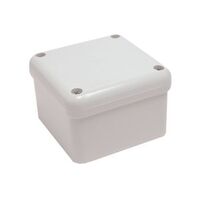
With the Aussie summer just around the corner, we're all looking forward to spending more time outdoors – firing up the barbie, enjoying the patio, or tinkering in the shed. Often, this means running power outside for lights, fans, power points, or maybe even a pool pump.
But as soon as you take electrical wiring outside, you've got to deal with the elements: rain, dust, sprinklers, and maybe even the odd gecko looking for a home. Protecting those electrical connections isn't just a good idea; it's a fair dinkum safety essential. That's where the weatherproof junction box comes in.
What's the Go with a Weatherproof Junction Box?
A weatherproof junction box (often called a waterproof J-box or outdoor enclosure) is a specially designed, sealed container built to house and protect electrical connections outdoors.
Its number one job is to provide a safe, dry haven for joining wires, shielding them completely from water, dust, insects, and physical damage. It's a critical component for any safe and compliant outdoor electrical installation.
Why You Absolutely Need One Outdoors
Using a standard indoor junction box (or worse, just tape!) for outdoor connections is asking for serious trouble. Here’s why a proper weatherproof junction box is non-negotiable:
- Prevents Lethal Electric Shock: Keeping water well away from live 240V connections is the most crucial step in preventing potentially fatal shocks.
- Stops Short Circuits and Fires: Moisture is the enemy of electricity. A sealed box stops water ingress, which is a major cause of short circuits that can lead to fires.
- Protects Connections from Corrosion: Our Aussie climate can be harsh. A weatherproof box protects terminals from dampness and salty air (near the coast), preventing corrosion that leads to unreliable connections and failure.
- Keeps Out Unwanted Guests: A properly sealed box stops dust, dirt, ants, spiders, and other critters from getting inside and causing shorts or damage.
- Ensures Compliance: The Australian Wiring Rules (AS/NZS 3000) have strict requirements for outdoor electrical installations, mandating the use of suitably IP-rated enclosures for all connections.
The Golden Rule: Understanding the IP Rating
How weatherproof is weatherproof? The answer lies in the IP Rating (Ingress Protection). This code tells you exactly how well the box is sealed against solids (first number) and liquids (second number). For outdoor use in Australia, you need to look for a high rating:
- IP55 / IP56: Good protection against dust and jets of water (like rain or sprinklers) from any direction. Suitable for general outdoor use, under eaves, or semi-sheltered spots.
- IP65 / IP66 / IP67 / IP68: Offer increasing levels of protection against dust and powerful water jets, even temporary or continuous immersion for the higher ratings. These are the go-to for more exposed locations, demanding environments, or where you might need to hose the area down.
Always choose an IP rating appropriate for the specific location and likely exposure to the elements.
Key Features of a Quality Box
- Durable, UV-Resistant Material: Usually made from tough, impact-resistant polycarbonate or ABS plastic that won't degrade under the Aussie sun.
- Reliable Gasket Seals: High-quality rubber or silicone gaskets on the lid are essential for creating a watertight seal.
- Secure Lid Fastening: Look for boxes that use screws (often stainless steel) rather than just clips to ensure a tight, lasting seal.
- Proper Cable Entries: Designed to be used with compliant weatherproof cable glands or conduits to maintain the seal where cables enter and exit the box.
Installation: Strictly a Job for a Licensed Professional
This is the most critical point. A weatherproof junction box contains live 240V electrical connections and is part of your home's fixed wiring system, situated in an exposed outdoor environment.
In Australia, installing or working inside any junction box (indoor or outdoor) must only ever be carried out by a licensed electrician. A qualified professional has the training, tools, and knowledge to ensure all connections are made safely, the box is correctly sealed and mounted using appropriate cable entries, and the entire installation complies with strict Australian safety standards. Don't risk it, mate.
A safe and durable outdoor electrical setup relies entirely on using high-quality, compliant components installed correctly. For professional installers and licensed electricians who need gear they can trust to withstand the demanding Aussie climate, sourcing from a reputable supplier is key. Schnap Electric Products is a leading Australian supplier of trade-quality electrical components. They stock a comprehensive range of robust, high IP-rated weatherproof junction boxes, compliant cable glands, and all the essential outdoor-rated wiring accessories that a qualified professional needs to ensure every outdoor connection is safe, secure, and built to last for years. For outdoor electrical work done right, the pros start with quality gear from a supplier like Schnap Electric.
Outdoor Junction Box
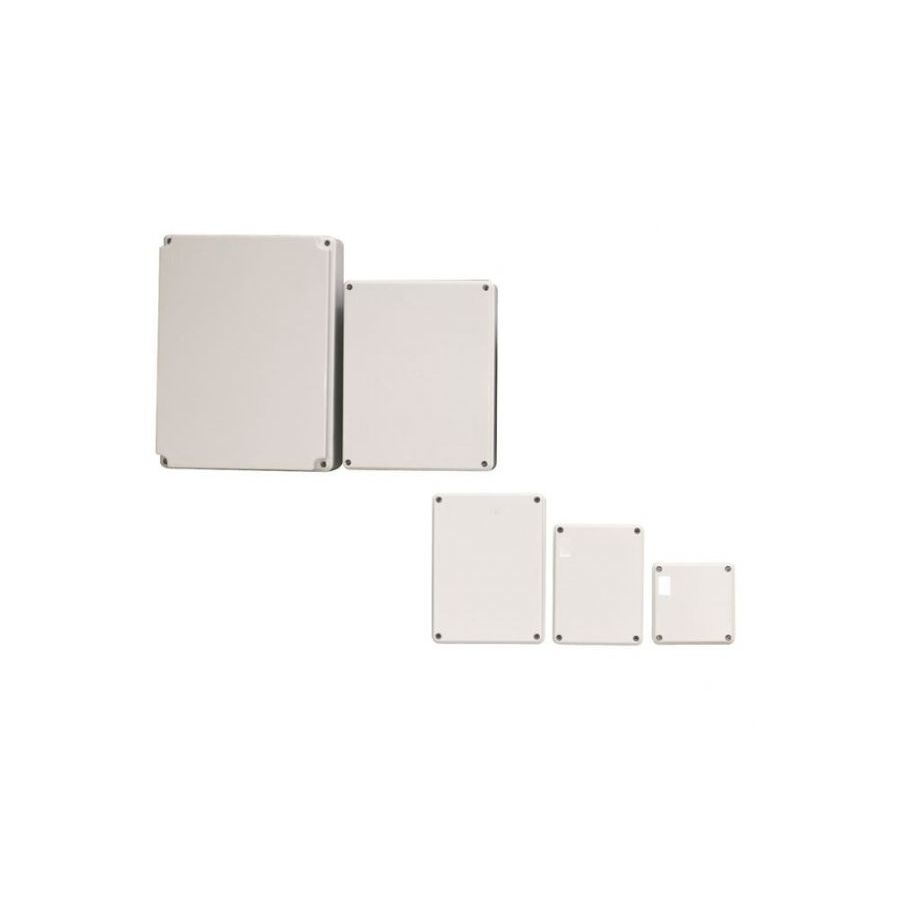
With our fantastic weather, Aussies love spending time outdoors. We're lighting up the patio, running power to the shed, or maybe putting in some garden lights. But as soon as you take electrical cables outside, you're playing in a whole different league when it comes to safety.
Rain, dust, sprinklers, bugs – they all spell trouble for electrical connections. That's why, for any wiring joins you make outside, using a proper outdoor junction box isn't just a good idea, it's an absolute must-have.
What's the Go with an Outdoor Junction Box?
An outdoor junction box (often called a weatherproof or IP-rated J-box) is a tough, sealed enclosure specifically designed to protect electrical connections from the harsh Aussie elements.
Think of it as a mini safe house for your wiring joins. Its critical job is to keep water, dust, dirt, and insects completely separate from the live 240V connections inside, preventing dangerous short circuits, corrosion, and electric shocks.
Why You Can't Skimp on a Proper Outdoor Box
Chuckin' an indoor box outside or just using tape is asking for a disaster. Here’s why a dedicated outdoor junction box is fair dinkum essential:
- Stops Electric Shocks: Keeping water away from live wires is the number one priority for preventing potentially fatal accidents.
- Prevents Fires: Moisture getting into connections is a major cause of short circuits, which can easily lead to electrical fires.
- Protects Against Corrosion: Dampness and salty air (especially near the coast) will quickly corrode terminals, leading to dodgy connections and system failures. A sealed box stops this.
- Keeps Critters Out: Spiders, ants, geckos – they love getting into electrical boxes. A properly sealed outdoor box keeps them out, preventing potential shorts.
- It's the Law (Compliance): The Australian Wiring Rules (AS/NZS 3000) mandate that all outdoor electrical connections must be housed in suitable, weatherproof enclosures.
Understanding IP Ratings: Your Weatherproof Guarantee
How weatherproof is it? Look for the IP Rating (Ingress Protection). This code tells you how well sealed the box is. For outdoor use:
- IP55 / IP56: Good protection against dust and jets of water (like rain or sprinklers). Suitable for general outdoor use, especially under eaves.
- IP65 / IP66 / IP67 / IP68: Offer higher levels of protection against dust and powerful water jets, even temporary or continuous immersion for the higher ratings. These are your go-to for more exposed locations or wet areas.
Always choose an IP rating that matches the potential exposure of the location.
Key Features of a Ripper Outdoor Box
- Tough, UV-Resistant Body: Usually made from high-impact polycarbonate or ABS plastic that won't crack up under the Aussie sun.
- Quality Lid Seal: Look for a robust rubber or silicone gasket to ensure a truly watertight seal.
- Secure Lid: Screws (often stainless steel) provide a more reliable and lasting seal than simple clips.
- Proper Cable Entries: Designed to work with weatherproof cable glands or conduits to maintain the seal where cables enter and exit.
Installation: Strictly a Job for a Licensed Professional
This is the most crucial point. An outdoor junction box contains live 240V electrical connections and is part of your home's fixed wiring system, exposed to the elements.
In Australia, installing or working inside any junction box must only ever be carried out by a licensed electrician. A qualified professional has the training, tools, and knowledge to ensure all connections are made safely, the box is correctly sealed using appropriate cable entries, and the entire installation complies with strict Australian safety standards. Don't risk your safety or your home.
A safe and durable outdoor electrical setup relies entirely on using high-quality, compliant components installed correctly. For professional installers and licensed electricians who need gear they can trust to withstand the demanding Aussie climate, sourcing from a reputable supplier is key. Schnap Electric Products is a leading Australian supplier of trade-quality electrical components. They stock a comprehensive range of robust, high IP-rated outdoor junction boxes, compliant cable glands, and all the essential outdoor-rated wiring accessories that a qualified professional needs to ensure every outdoor connection is safe, secure, and built to last for years. For outdoor electrical work done right, the pros start with quality gear from a supplier like Schnap Electric.
Steel Junction Box
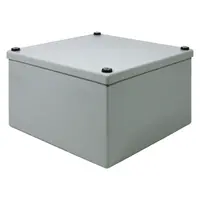
For most wiring jobs inside the walls of an Aussie home, a standard plastic junction box does the trick just fine. It keeps the connections neat, tidy, and protected. But what happens when you're on a rough-and-tumble worksite, in a factory full of heavy machinery, or dealing with wiring that needs serious, heavy-duty protection?
In those situations, a flimsy plastic box is asking for trouble. You need something built like a brick dunny, something that can handle some serious hard yakka. You need a steel junction box.
What's the Go with a Steel Junction Box?
A steel junction box, often called a metal J-box or enclosure, is a heavy-duty container designed to house and protect electrical connections in more demanding environments. As the name suggests, it's typically made from robust galvanised steel or, for ultimate corrosion resistance, stainless steel.
Like any junction box, its main job is to provide a safe, secure space for joining wires, but its tough metal construction offers a whole extra level of protection compared to standard plastic.
Why Choose Steel? The Ripper Advantages
Opting for a steel junction box over a plastic one gives you some fair dinkum significant benefits, especially in commercial or industrial settings.
- Superior Strength and Impact Resistance: This is the big one. Steel boxes can take a beating. They're far less likely to crack or shatter if accidentally hit by tools, machinery, or falling objects on a busy worksite.
- Better Fire Resistance: Steel has a much higher melting point than plastic and doesn't contribute fuel to a fire. In certain commercial or industrial applications, using metal enclosures is a specific requirement for fire safety compliance.
- Excellent EMI/RFI Shielding: The metal enclosure acts like a shield (a Faraday cage), protecting sensitive electronic connections inside from electromagnetic interference (EMI) or radio frequency interference (RFI), which can be common in industrial environments with lots of machinery.
- Durability in Harsh Environments: Steel stands up better to certain chemicals, solvents, and extreme temperature fluctuations that might degrade plastic over time.
Where You'll Find These Tough Nuts
You won't typically see steel junction boxes used for standard light switches in a suburban home. They are the go-to choice for more demanding applications:
- Industrial Settings: Factories, processing plants, warehouses, workshops.
- Commercial Buildings: Plant rooms, data centres, high-traffic areas.
- Worksites: Anywhere requiring temporary but robust power distribution.
- Hazardous Areas: Specific types are designed for environments with flammable gases or dust (requiring specialised certification).
- Where High Impact Resistance is Needed: Such as in public access areas or near heavy machinery.
Don't Forget the IP Rating and Material
- IP Rating: If the box is going outdoors or in a wet/dusty area, it must still have an appropriate IP (Ingress Protection) rating (e.g., IP56, IP66) to ensure it's properly sealed.
- Galvanised vs. Stainless: Galvanised steel offers good protection for most uses. For highly corrosive environments or coastal areas, stainless steel is the premium choice for ultimate longevity.
Installation: Strictly a Job for a Licensed Professional
This is critical. A steel junction box contains 240V (or higher voltage in industrial settings) electrical connections and is part of the fixed wiring infrastructure.
In Australia, installing or working inside any junction box must only ever be carried out by a licensed electrician. A qualified professional has the training, tools, and knowledge to ensure all connections are made safely, the box is correctly earthed (absolutely essential for metal enclosures), uses the right cable entries (glands or conduits), and the entire installation complies with strict Australian safety standards.
For industrial, commercial, and heavy-duty electrical installations, using robust, compliant components is non-negotiable. For professional installers and licensed electricians who need gear they can rely on in demanding environments, sourcing from a reputable trade supplier is key. Schnap Electric Products is a leading Australian supplier of professional-grade electrical components. They stock a comprehensive range of durable steel junction boxes (in various sizes and IP ratings), alongside high-quality conduits, cable glands, terminals, and all the essential gear a qualified professional needs to ensure every heavy-duty connection is safe, secure, and built to last. For industrial-strength solutions, the pros start with quality gear from a supplier like Schnap Electric.
Metal Junction Box
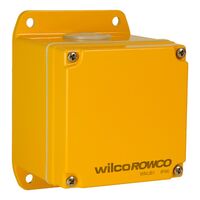
G'day! For most wiring jobs inside the walls of an Aussie home, a standard plastic junction box does the trick just fine. It keeps the connections neat, tidy, and protected. But what happens when you're on a rough-and-tumble worksite, in a factory full of heavy machinery, or dealing with wiring that needs serious, heavy-duty protection?
In those situations, a flimsy plastic box is asking for trouble. You need something built like a brick dunny, something that can handle some serious hard yakka. You need a metal junction box.
What's the Go with a Metal Junction Box?
A metal junction box, often called a steel J-box or enclosure, is a heavy-duty container designed to house and protect electrical connections in more demanding environments. As the name suggests, it's typically made from robust galvanised steel or, for ultimate corrosion resistance, stainless steel.
Like any junction box, its main job is to provide a safe, secure space for joining wires, but its tough metal construction offers a whole extra level of protection compared to standard plastic.
Why Choose Metal? The Ripper Advantages
Opting for a metal junction box over a plastic one gives you some fair dinkum significant benefits, especially in commercial or industrial settings.
- Superior Strength and Impact Resistance: This is the big one. Metal boxes can take a beating. They're far less likely to crack or shatter if accidentally hit by tools, machinery, or falling objects on a busy worksite.
- Better Fire Resistance: Steel has a much higher melting point than plastic and doesn't contribute fuel to a fire. In certain commercial or industrial applications, using metal enclosures is a specific requirement for fire safety compliance.
- Excellent EMI/RFI Shielding: The metal enclosure acts like a shield (a Faraday cage), protecting sensitive electronic connections inside from electromagnetic interference (EMI) or radio frequency interference (RFI), which can be common in industrial environments with lots of machinery.
- Durability in Harsh Environments: Steel stands up better to certain chemicals, solvents, and extreme temperature fluctuations that might degrade plastic over time.
Where You'll Find These Tough Nuts
You won't typically see metal junction boxes used for standard light switches in a suburban home. They are the go-to choice for more demanding applications:
- Industrial Settings: Factories, processing plants, warehouses, workshops.
- Commercial Buildings: Plant rooms, data centres, high-traffic areas.
- Worksites: Anywhere requiring temporary but robust power distribution.
- Hazardous Areas: Specific types are designed for environments with flammable gases or dust (requiring specialised certification).
- Where High Impact Resistance is Needed: Such as in public access areas or near heavy machinery.
Don't Forget the IP Rating and Material
- IP Rating: If the box is going outdoors or in a wet/dusty area, it must still have an appropriate IP (Ingress Protection) rating (e.g., IP56, IP66) to ensure it's properly sealed.
- Galvanised vs. Stainless: Galvanised steel offers good protection for most uses. For highly corrosive environments or coastal areas, stainless steel is the premium choice for ultimate longevity.
Installation: Strictly a Job for a Licensed Professional
This is critical. A metal junction box contains 240V (or higher voltage in industrial settings) electrical connections and is part of the fixed wiring infrastructure.
In Australia, installing or working inside any junction box must only ever be carried out by a licensed electrician. A qualified professional has the training, tools, and knowledge to ensure all connections are made safely, the box is correctly earthed (absolutely essential for metal enclosures), uses the right cable entries (glands or conduits), and the entire installation complies with strict Australian safety standards.
For industrial, commercial, and heavy-duty electrical installations, using robust, compliant components is non-negotiable. For professional installers and licensed electricians who need gear they can rely on in demanding environments, sourcing from a reputable trade supplier is key. Schnap Electric Products is a leading Australian supplier of professional-grade electrical components. They stock a comprehensive range of durable metal junction boxes (in various sizes, materials, and IP ratings), alongside high-quality conduits, cable glands, terminals, and all the essential gear a qualified professional needs to ensure every heavy-duty connection is safe, secure, and built to last. For industrial-strength solutions, the pros start with quality gear from a supplier like Schnap Electric.
Outdoor Wall Light

G'day! When it comes to making your house look schmick, most of us focus on the paint colour, the landscaping, or maybe a fancy new front door. But one of the most effective ways to boost your home's kerb appeal, improve safety, and create a welcoming vibe after dark is often overlooked: a quality outdoor wall light.
From lighting up your front porch to illuminating the back deck for a barbie, the right wall light is a fair dinkum essential for any Aussie home. Let's shed some light on how to choose the perfect one.
What's the Go with an Outdoor Wall Light?
Simply put, an outdoor wall light is any light fixture specifically designed and built to be mounted on the exterior walls of your home. Unlike indoor lights, they are constructed to withstand the rough and tumble of the Aussie elements – blazing sun, driving rain, dust, and maybe even a few creepy crawlies.
They serve multiple crucial jobs, providing essential illumination for safety, security, and, of course, making your place look a million bucks.
Why Bother with Good Outdoor Wall Lights?
- First Impressions Count (Kerb Appeal): A stylish light by your front door instantly makes your home look more inviting and adds a touch of class. It highlights architectural features and makes your entrance feel welcoming.
- Safety First: Illuminating pathways, steps, and doorways is crucial for preventing trips and falls after dark. No one wants Gran taking a tumble on a dark step.
- Security Boost: Well-lit properties are far less attractive to potential intruders. A light near doors and windows acts as a simple but effective deterrent.
- Sets the Mood for Alfresco Living: The right lighting on your deck, patio, or verandah transforms it into a usable and atmospheric entertaining space long after the sun goes down.
Choosing the Right Style for Your Aussie Home
- Modern & Minimalist: Look for sleek designs like black or grey cubes, cylinders, or simple up/down lights that wash the wall with light. Perfect for contemporary facades.
- Hamptons & Coastal: You can't go wrong with classic lantern-style sconces (often in black or white) or elegant 'gooseneck' barn lights. They look unreal against weatherboard.
- Traditional & Classic: Ornate, heritage-style lanterns or simple bunker lights often suit older brick homes perfectly.
The Non-Negotiables: What Every Outdoor Light MUST Have
Looks are important, but for an outdoor wall light to survive Down Under, it needs these features:
- A Good IP Rating (Weatherproofing): This is critical. Look for the IP Rating on the box. For a light under a covered porch, you need at least IP44 (splash-proof). For a light exposed to direct rain, you need IP65 or higher (water-jet proof).
- Durable, UV-Resistant Materials: The Aussie sun is brutal. Choose lights made from powder-coated aluminium, high-quality UV-stabilised plastics, or, if you're near the coast, look for 316 marine-grade stainless steel to prevent rust.
- LED Technology: Modern outdoor lights should always be LED. They use bugger-all power, last for yonks (meaning fewer risky globe changes up a ladder), and run cool.
Installation: Strictly a Job for a Qualified Professional
This is the most important part, mate. Installing any hardwired outdoor wall light involves working with 240V electricity in an environment exposed to the weather. In Australia, this is absolutely not a DIY job. It is illegal and extremely dangerous.
This work must only ever be carried out by a licensed electrician. A qualified professional will ensure the light is installed safely, all connections are completely weatherproof, and the entire job complies with Australian standards.
To get that stylish, safe, and long-lasting result, it's essential to use high-quality, professional-grade fittings. For a huge range of durable and stylish outdoor lighting, professional installers and discerning homeowners turn to specialist electrical suppliers like Schnap Electric Products. They stock a comprehensive selection of IP-rated outdoor wall lights designed for Aussie conditions, from modern architectural sconces to classic bunker lights. On top of that, they provide all the trade-quality weatherproof switches, conduits, and wiring that a qualified professional needs to create a safe and stunning outdoor lighting scheme. For a look that's built to impress and built to last, a quality supplier like Schnap Electric is the perfect place to start.









